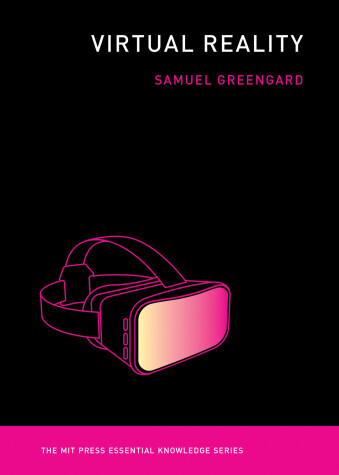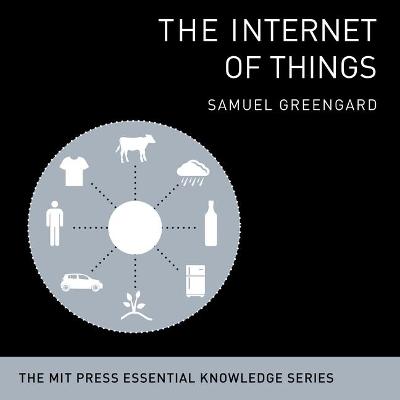MIT Press Essential Knowledge
4 total works
We turn on the lights in our house from a desk in an office miles away. Our refrigerator alerts us to buy milk on the way home. A package of cookies on the supermarket shelf suggests that we buy it, based on past purchases. The cookies themselves are on the shelf because of a “smart” supply chain. When we get home, the thermostat has already adjusted the temperature so that it's toasty or bracing, whichever we prefer. This is the Internet of Things—a networked world of connected devices, objects, and people. In this book, Samuel Greengard offers a guided tour through this emerging world and how it will change the way we live and work.
Greengard explains that the Internet of Things (IoT) is still in its early stages. Smart phones, cloud computing, RFID (radio-frequency identification) technology, sensors, and miniaturization are converging to make possible a new generation of embedded and immersive technology. Greengard traces the origins of the IoT from the early days of personal computers and the Internet and examines how it creates the conceptual and practical framework for a connected world. He explores the industrial Internet and machine-to-machine communication, the basis for smart manufacturing and end-to-end supply chain visibility; the growing array of smart consumer devices and services—from Fitbit fitness wristbands to mobile apps for banking; the practical and technical challenges of building the IoT; and the risks of a connected world, including a widening digital divide and threats to privacy and security. Finally, he considers the long-term impact of the IoT on society, narrating an eye-opening “Day in the Life” of IoT connections circa 2025.
After years of hype, extended reality—augmented reality (AR), virtual reality (VR), and mixed reality (MR)—has entered the mainstream. Commercially available, relatively inexpensive VR headsets transport wearers to other realities—fantasy worlds, faraway countries, sporting events—in ways that even the most ultra-high-definition screen cannot. AR glasses receive data in visual and auditory forms that are more useful than any laptop or smartphone can deliver. Immersive MR environments blend physical and virtual reality to create a new reality. In this volume in the MIT Press Essential Knowledge series, technology writer Samuel Greengard offers an accessible overview of developments in extended reality, explaining the technology, considering the social and psychological ramifications, and discussing possible future directions.
Greengard describes the history and technological development of augmented and virtual realities, including the latest research in the field, and surveys the various shapes and forms of VR, AR, and MR, including head-mounted displays, mobile systems, and goggles. He examines the way these technologies are shaping and reshaping some professions and industries, and explores how extended reality affects psychology, morality, law, and social constructs. It's not a question of whether extended reality will become a standard part of our world, he argues, but how, when, and where these technologies will take hold. Will extended reality help create a better world? Will it benefit society as a whole? Or will it merely provide financial windfalls for a select few? Greengard's account equips us to ask the right questions about a transformative technology.
Since the publication of the original edition of this volume in the MIT Press Essential Knowledge series, the Internet of Things (IoT) has evolved from a novelty (look! my phone connects to my lamp!) to a mainstream technology framework that we rely on every day to accomplish many tasks. This revised and updated edition reports on the latest developments in this rapidly evolving networked world of connected devices, objects, and people that is changing the way we live and work.
Business and technology writer Samuel Greengard takes us on a guided tour of the IoT, describing smart lightbulbs, sensors in phones that trigger earthquake warnings, 3D headsets that connect users to business expos through completely immersive virtual reality environments, and more. He offers a clear explanation of the technology that builds and manages the IoT and examines the growing array of consumer devices now available, from smart door locks to augmented reality fitting rooms. Greengard also shows how the IoT is part of the Fourth Industrial Revolution, which is transforming business through smart manufacturing, end-to-end supply chain visibility, integrated artificial intelligence, and much more. He considers risks associated with the IoT, including threats to free speech, growing inequality, and an increase in cybercrime. Finally, he takes a look at the future of a hyperconnected world and what it means to people and human interaction.



